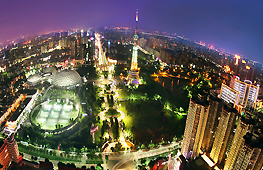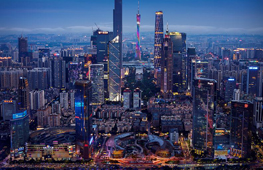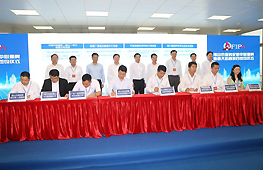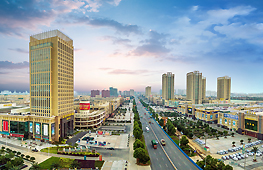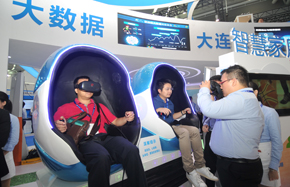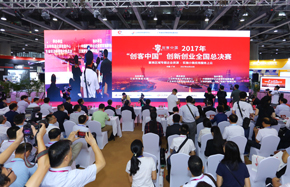Chengdu becoming a national gateway
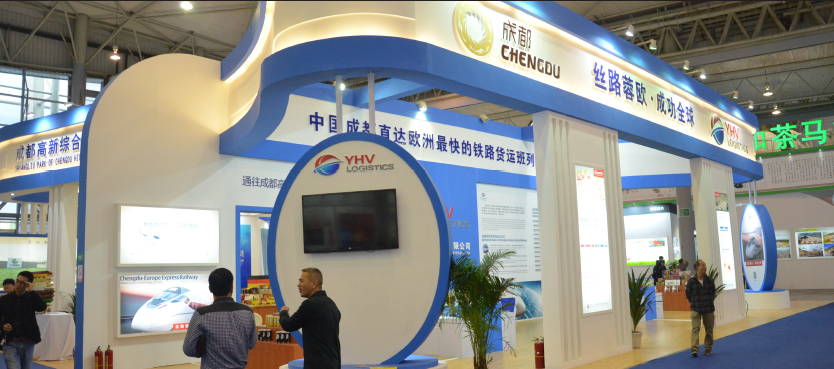 |
|
Chengdu shows its advantages in the Western China (Sichuan) Import Expo and International Investment Fair in October.Photo/China Daily |
My home city, Chengdu, hosted top companies from around the world such as Dell and Microsoft for the first-ever investment fair for western China in October. I think it's great. We're really making bold moves to help this region get along and work with foreign countries, especially those along the Silk Road Economic Belt and the 21st Century Maritime Silk Road. It's an exciting time, and Chengdu is leading the way.
- Panda Rong Rong
City aims to lead inland, western regions to open up in line with the Belt and Road Initiative
China's east coast has been a dynamic economic driver since the late 1970s, attracting the lion's share of industries and overseas investment, and enjoying a prosperous import and export trade.
Yet the western region is quickly catching up as the nation promotes the Belt and Road Initiative and the Yangtze River Economic Belt.
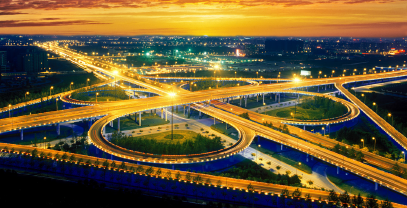 |
|
Chengdu aims to expand and optimize its air, rail and highway networks, making the city an international logistics hub and a gateway to Asia and Europe. Photo provided to China Daily |
Chengdu, which lies at the intersection of the two belts and has grabbed much global attention, hosted the first Western China (Sichuan) Import Expo and International Investment Fair in October. The event drew delegates from 34 countries and regions, including the United States, Germany, France, Japan and South Korea, and 1,500 companies, including Dell, Microsoft, Bosch and Panasonic.
The expo was the largest of its kind in western China, covering 861,000 square feet, and mainly featured displays of advanced technical equipment and key components, trade in services and consumer goods. Through exhibitions and investment promotions, the event aimed to promote exchanges and cooperation with other countries and regions, especially those along the Silk Road Economic Belt and 21st Century Maritime Silk Road, in fields such as investment, trade, science and technology, finance, and e-commerce.
Top companies from China and abroad have favored Chengdu, the capital of Sichuan province and a regional hub for the southwest, for its vast market potential, dynamic economy, livable environment, good government services, and international connections.
Chengdu ranked No. 1 in a list of China's best-performing cities released by American think tank the Milken Institute.
Covering 4,780 square miles, the city has a population of more than 14 million and provides access to a market of 200 million people in southwestern China. The city's GDP passed 1 trillion yuan ($157 billion) last year, up 8.9 percent on 2013, while foreign direct investment reached $10 billion.
About 268 Fortune Global 500 companies have operations in Chengdu. The city also has 15 foreign consulates in operation or about to become operation, the largest number in western China, and has 28 sister cities and 39 friendly partner cities worldwide.
Many distinguished foreign guests have visited the city in recent years, including British Prime Minister David Cameron, German Chancellor Angela Merkel and U.S. First Lady Michelle Obama.
"As the starting point of the Southern Silk Road, Chengdu has always been active in economic and cultural exchanges with neighboring countries," said Lin Ling, an economist and former deputy director of the Sichuan Academy of Social Sciences.
The Southern Silk Road was part of the ancient Silk Road trading route, which stretched from China's southwest into Myanmar, Thailand and India before finishing in the Middle East. Historians say silk, textiles and iron products from Chengdu were exported to what is now Afghanistan and Myanmar, with ivory, seashells and colored glaze products brought to Chengdu.
"The cultural and spiritual DNA of Chengdu lies in its innovation, its tolerance and its eagerness to open up and interact with the world," Lin said, adding that the Belt and Road Initiative has turned Chengdu from an inland city into a pioneer in China's opening up to the West.
Global Accessible
Thanks to multiple air routes, the city is closely tied to the world.Chengdu Shuangliu International Airport was the fourth busiest among the 202 civil airports on the Chinese mainland in the first half of this year, handling 20.3 million passengers.
The airport has 248 air routes, including 84 international routes that link Chengdu to cities including London, San Francisco, Moscow and Melbourne. A nonstop route from Chengdu to Paris is expected to start running in December.
Railway lines starting in Chengdu not only connect the city to locations across China, but also to Central Asia and Europe. The Chengdu-Europe Express Rail, which opened in April 2013 and runs from Chengdu to Lodz in Poland, is playing a vital role in trade between western China and Europe.
The train carries laptops, auto parts, home appliances, and other daily necessities worth millions of dollars from Chengdu to Europe once a week, and brings back products from Europe, mainly food and beverages. A one-way trip takes about 10 days.
With an increasing number of Chinese cities linked by its express rail services, Chengdu is acting as a key land transport hub for Asia and Europe.
Ambitious goal
In line with the Belt and Road Initiative and national plans to develop the Yangtze River Economic Belt, the Chengdu government announced on Oct. 15 that it aims to build the city into a national gateway, a leader in opening up to the world among China's inland cities, and western China’s economic and innovation center.
To achieve the goal, the city will improve transportation and communication infrastructure, expand international cooperation, upgrade local industries, and deepen innovation and entrepreneurship, said an official from the Chengdu Development and Reform Commission. The official said Chengdu would expand and optimize its airline, railway and highway networks, making the city an international logistics hub and a gateway to Asia and Europe.
Chengdu is scheduled to start construction on a new airport, making it the third city on the mainland to have a second civil airport, after Beijing and Shanghai.
According to the plan, the first phase will be finished by 2018, when it will be able to handle 40 million passengers and 700,000 metric tons of cargo a year. The long-term goal is to have capacity for 90 million passengers and 2 million metric tons of cargo a year.
The new airport will mainly serve international routes, with Shuangliu airport handling domestic flights. It is expected to strengthen Chengdu's status as the largest aviation hub in China's central and western regions. By 2020, the railway network will make it possible to travel between Chengdu and Chongqing and other nearby cities within an hour; major cities such as Xi'an, Kunming, Guiyang and Wuhan within four hours; and to the Yangtze River Delta, Pearl River Delta and the Bohai Rim area within eight hours.
In addition, Chengdu plans to expand exchanges with countries and regions along the Belt and Road by developing cooperation platforms such as Chengdu Hi-Tech Industrial Development Zone and Tianfu New Area, encouraging companies to go out, and establishing sister relationships with major cities.
The city has also placed a high priority on the development of advanced manufacturing and the modern service industry, and is striving to build a good environment and high-end platforms to promote innovation and entrepreneurship.






